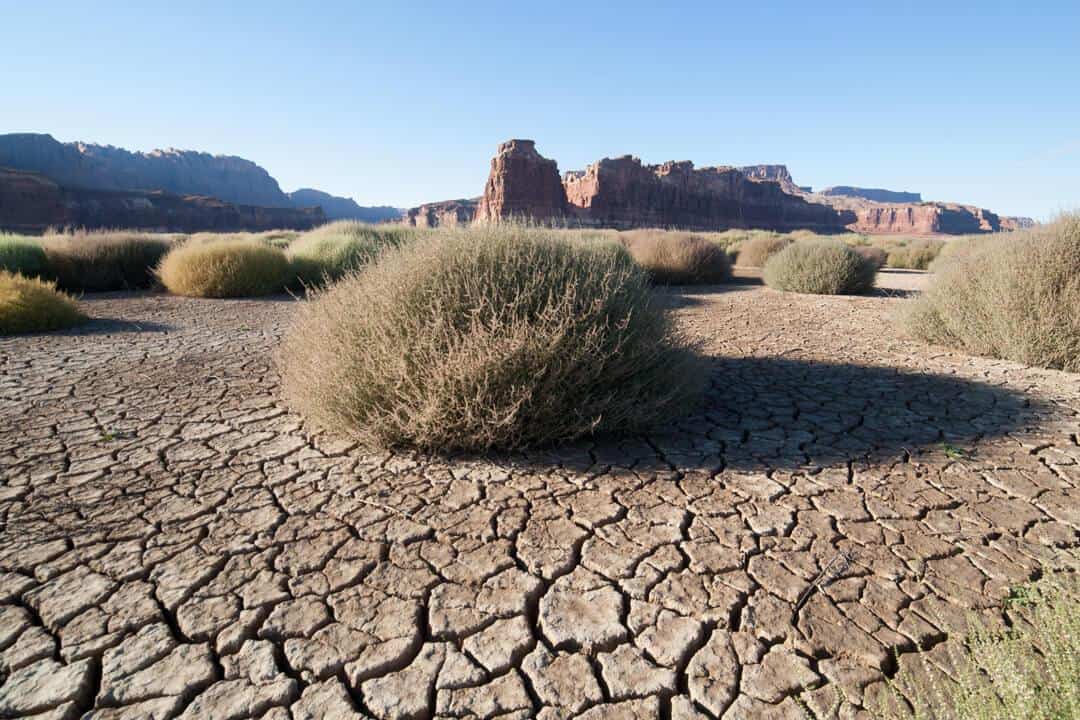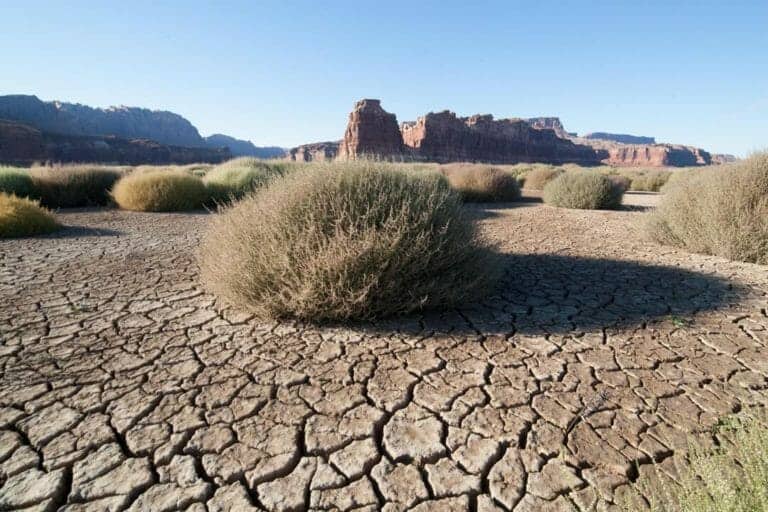Photo: Russian thistle in a former reservoir along the Colorado River in Hite, October 2018. (Photo by John Herrick)
Gov. John Hickenlooper’s water plan has been big on collaboration, but short on action. He’ll leave the toughest decisions to his successor.
Colorado had plenty of reasons to worry about water by the time it elected John Hickenlooper in 2010.
The state was in its 11th year of drought. The health of its rivers was waning. And early projections of a statewide shortfall had cities and suburbs starting to stress out.
More urgent concerns have surfaced over Hickenlooper’s two terms as governor.
The drought has now lasted 19 years. Low precipitation and hotter temperatures have cut river flows by nearly 20 percent, with no end in sight. And the Colorado River, the state’s main source of water, is over-tapped to the point of possible federal intervention.
Colorado’s population, in the meantime, has skyrocketed with help from Hickenlooper’s pro-growth agenda, while its main source of water funding has proven unreliable. Ranchers are auctioning their cattle early […]
Full article: PARCHED: Climate change and growth are pushing Colorado toward a water crisis
More about the Colorado River water and the state of Colorado:
- Plan for Colorado River draws on Blue Mesa, Flaming Gorge reservoirs
- The Colorado River is evaporating, climate change largely to blame
- Water a focus for growing northern Colorado communities
- To Save Their Water Supply, Colorado Farmers Taxed Themselves
- Water under Colorado’s Eastern Plains running dry as farmers keep irrigating “great American desert”
- U.S.A. and Mexico agree to share a shrinking Colorado River
- Rising temperatures sucking water out of the Colorado River
- Colorado River v. State of Colorado
- SCOTUS: Upstream States to Reduce River Usage, Aid Downstream States in Drought
Related content by our editor:



